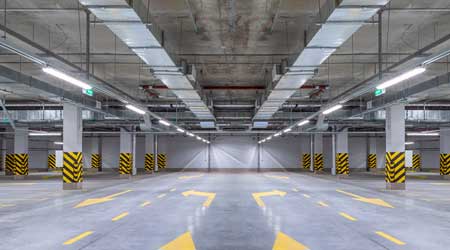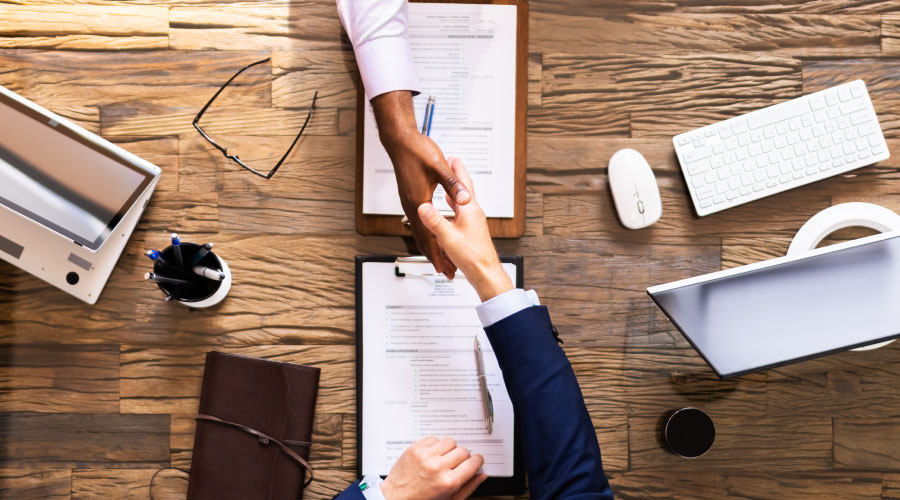How Coronavirus is Shifting Strategies for Parking Garages
Here's what to know and some tips for moving into the new normal of parking garage management during the coronavirus pandemic.
These are challenging times for everyone. Facility owners and managers are struggling to keep their buildings operating safely in a time of pandemic, and it’s not an easy task. And as we begin to reopen our communities, office buildings, and institutions, that task will become all the more challenging. As building and facility owners and managers work to protect tenants, staff, and patrons during this crisis, it’s important not to forget parking facilities.
For the most part, shutting down parking areas isn’t an option, even during government-mandated shut-downs, because they need to remain open to serve essential workers. And when our communities reopen, parking will become all the more important because many people who have relied on public transportation in the past are expected to drive themselves for the foreseeable future. People won’t feel safe in crowded buses and trains until there’s a treatment and vaccine for the virus.
Like other common areas, parking facilities present a number of challenges when it comes to protecting employees, tenants, and visitors from COVID-19. For example, there are numerous “touchpoints” where people frequently touch surfaces that may have been used by many other people, and on which the virus can live, potentially for several days. As challenging as it may be, though, there are steps building owners and managers can take to make parking areas safer.
Sanitation
Sanitation is of paramount concern, particularly in common areas. Until this crisis passes, it’s advisable to use hospital grade cleaning supplies recommended by experts. It is important to not only consider those parking in the garage, but to also think about frontline staff who are working tirelessly to keep operations afloat.
During this crisis, adhere to the guidelines established by the Centers for Disease Control (CDC). The CDC recommends cleaning hard, non-porous surfaces with a detergent or soap before disinfecting them. Most common EPA-registered household disinfectants should be effective as long as you adhere to the manufacturer’s instructions for concentration, application method, and contact time.
For electronics, the CDC recommends following the manufacturer’s instructions for cleaning and disinfecting their products. If no manufacturer guidance is available, alcohol-based wipes and sprays containing at least 70 percent alcohol should be effective.
There are a number of common touchpoints that require particularly aggressive cleaning. The most obvious are doors and door handles, stairway handles, and elevators and elevator lobbies. In elevators and elevator lobbies, it’s particularly important to pay close attention to call buttons. Frequent cleaning is called for, and if you can obtain extra sanitizing wipes, it makes sense to leave them in common areas so staff, tenants, and visitors can wipe down any surfaces they touch. Not only does this protect them, but it protects others who will be touching those surfaces after them.
Another area of parking where sanitation is essential, but which could easily be overlooked, is technology. Access and revenue control equipment, pay-on-foot stations, and on-street parking meters are all active touchpoints. People are using them all day long to pay for parking, so it’s imperative to frequently clean their surfaces and, when possible, offer sanitary wipes so visitors can clean them off before using them.
However, as important as sanitation is, it’s not enough. No matter how much you wipe down your equipment or what solutions you use, it only takes one sick person to contaminate your facilities. And when that happens, your parkers and staff are at risk. That’s why it’s vital to consider other strategies, as well.
Technology
Speaking of parking technology, there are a number of ways in which technology can help protect patrons and promote public health. Facilities that have frictionless technologies in place are at an advantage in this regard.
Frictionless parking uses various technologies — advanced parking access & revenue control (PARCS), license plate recognition (LPR) or automatic vehicle identification (AVI), parking guidance, and sometimes pre-booking — to allow drivers to pre-pay or establish payment credentials and then enter and exit garages without having to stop to pull a ticket upon entering or pay upon exiting. To use frictionless parking, drivers either reserve parking or set up an account with payment credentials that are tied to their license plate number. When the driver arrives at the garage their vehicle is recognized by LPR technology, or they flash a bar code provided by a pre-booking platform, and the entrance gate raises to let them in. When they are ready to leave, the same system works — LPR recognizes them or the bar code is again scanned — and their account is charged. There are now parking options available that don’t require gates, but instead utilize LPN technology for access management. With frictionless parking there’s no need for the driver to touch any equipment.
There are other technologies in common use that can also promote public health. For instance, if you already offer mobile payment, encourage your parkers to use it. It’s much safer right now for them to be handling their own mobile devices to pay than using the shared screens of PARCS equipment, pay-on-foot machines, or meters. Most of us associate mobile payment with municipal on-street parking, but many private parking owners and operators also offer it to improve convenience and make parking more manageable. If your organization offers mobile payment, now is the time to aggressively promote that tactic to increase adoption.
Likewise, parking pre-payment platforms can also promote public health by allowing drivers to reserve and pay for parking in advance. Drivers who pre-book don’t have to touch PARCS or payment equipment when they use parking facilities. Both mobile payment and parking pre-booking platforms are easily obtained if you don’t currently offer them, and they typically are available at minimal, if any, cost to owners and parkers.
For buildings and complexes with frictionless parking or contactless parking, launch a marketing campaign to encourage your patrons to download the parking app and set up touchless payments.
Management
Finally, building owners and managers can promote public health through operational strategies. For instance, even if you can’t close parking facilities all together, you may be able to close some sections. Parking utilization is down right now for most owners (aside from health care providers and organizations providing emergency services). By closing sections of parking facilities and concentrating services in specific sections of your parking facility, you can reduce the area that needs to be regularly sanitized. Don’t forget about those overdue maintenance repairs. It could potentially be a good time to have repairs completed in those closed sections of the garage. Not only is it safer, but it can be more economical to perform that work during normal business hours.
Communication is also vital. You want to clearly communicate to parkers important messages about how to safely use parking facilities. Many parking owners use dynamic signage at entrances and at gateways to elevator and stair towers to remind parkers not to touch surfaces and tell them how to get to their ultimate destinations most quickly and directly. Dynamic signs are particularly useful because they can be programmed with new, real-time, messages that can be updated quickly as circumstances change. During the current circumstances, it is especially important that owners over-communicate practices in place to ensure the safety and health of anyone entering a parking facility.
In the emergency planning process, parking should always have a place at the table. As you plan for public health contingencies and circumstances for your building or complex as they arise, not to mention planning for future contingencies, parking planners and administrators should always have a part in these discussions. With the abundance of common touchpoints in parking facilities, it’s vital for parking managers to be part of the public health discussion.
Finally, parking facilities are where visitors and employees have their initial contact with your building, complex, or campus. Parking managers can provide insight on the number of people visiting every day, and they know when they tend to arrive and how long they tend to stay. They have access to unique, vital data that can help building, complex, and campus leaders better manage their facilities. So, consider adjusting your current parking operations manuals to include emergency scenarios from a parking professional
These can be difficult — and scary — times. As you build strategies for protecting tenants, visitors, and staff from COVID-19 and other public health threats, don’t forget to include parking experts in your planning.
Nicole Chinea, CAPP is a senior project manager in WGI’s parking division. She can be reached at Nicole.Chinea@wginc.com.
Related Topics:












